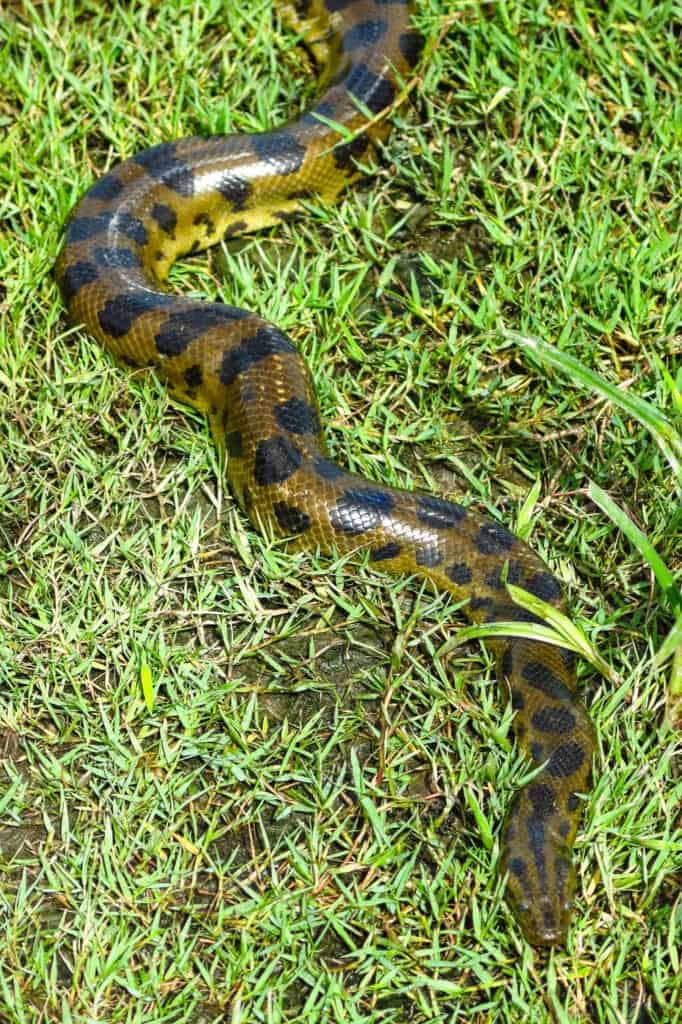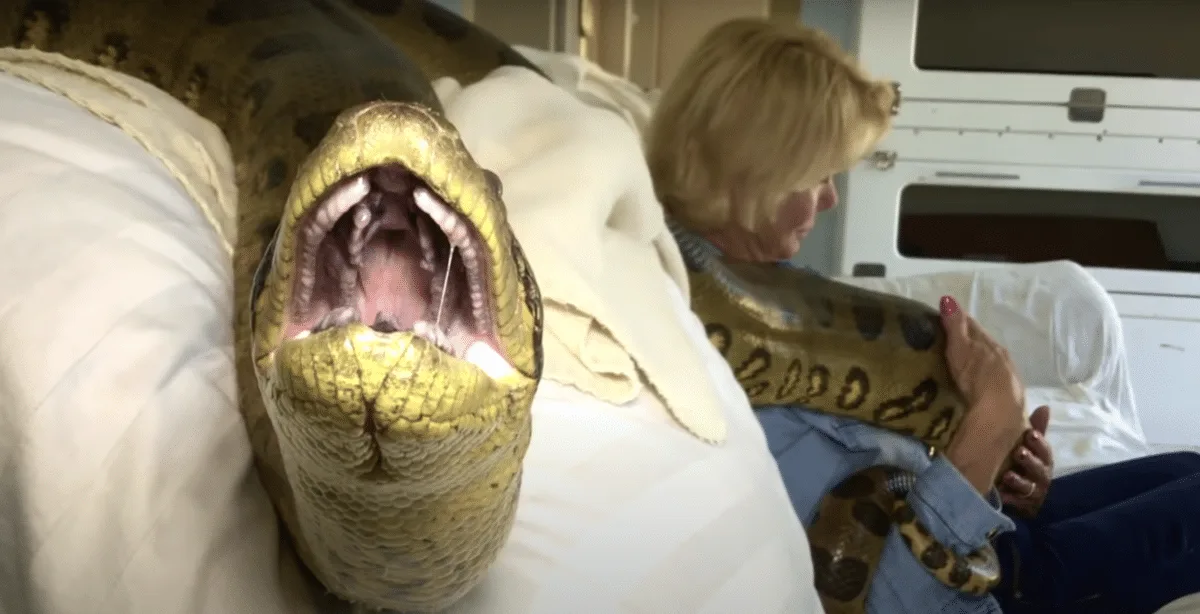The Amazon rainforest, often referred to as the “lungs of the Earth,” is not only a sanctuary for an incredible array of flora and fauna but is also home to one of the world’s most renowned and gigantic snakes – the anaconda. These colossal reptiles have fascinated and intrigued both researchers and adventurers for generations. In this article, we will delve into the world of anacondas, explore their remarkable size and characteristics, and reveal the astonishing story of the biggest anaconda ever recorded.

Anacondas, a group of large constrictor snakes, are primarily found in South America. While there are several species, the green anaconda (Eunectes murinus) stands out as the heaviest and one of the longest snake species globally. They are known to inhabit the waterways, swamps, and dense rainforests of the Amazon Basin and surrounding regions. These formidable creatures are known for their unique adaptations and incredible size, making them the apex predators in their habitat.
The Largest Anaconda on Record
In the world of giant anacondas, one name stands out – “Medusa.” This colossal green anaconda achieved legendary status when she was recognized as the biggest anaconda ever recorded. Medusa came to prominence when she was featured on the hit Animal Planet show “Eaten Alive” in 2014.

Medusa was a captive anaconda, living at The Edge of Hell Haunted House in Kansas City, Missouri. She was well cared for and well-known for her massive size, weighing an astonishing 350 pounds and measuring 25 feet in length. Her impressive girth and length far surpassed the average for her species, making her a true anomaly.
The story of Medusa and her appearance on “Eaten Alive” ignited both curiosity and controversy. The show’s premise was to demonstrate an anaconda’s ability to swallow a human, but the event drew criticism and concerns for animal welfare. Ultimately, the experiment was called off, and no harm came to the snake.

Medusa’s incredible size, while remarkable, was not without its challenges. In captivity, her care required meticulous attention to ensure her health and well-being. She was undoubtedly a marvel of nature and a testament to the extraordinary dimensions that some snakes can achieve.
It’s important to note that the biggest anacondas on record are typically individuals held in captivity. In the wild, green anacondas can reach lengths of up to 29 feet, making them one of the longest snake species.
In Conclusion, the anaconda, and particularly the green anaconda, is a remarkable species known for its extraordinary size and unique adaptations. While “Medusa” remains one of the most famous examples, it’s important to remember that giant anacondas are relatively rare, and most individuals in the wild do not reach the massive proportions seen in captivity. They continue to be a source of fascination, both in the scientific community and the broader public, as we seek to better understand these incredible creatures and their place in the intricate web of life in the Amazon rainforest.
Join our Forum for free today!

- Insects are Dismantling Tunisia’s Crucial Prickly Pear Industry - July 24, 2024
- Cocoa Traders Risk Losing Billions to Ghana’s Infected Crops - July 24, 2024
- Miracle on the Mountain: A Seven-Hour Dog Rescue Underground - July 23, 2024

